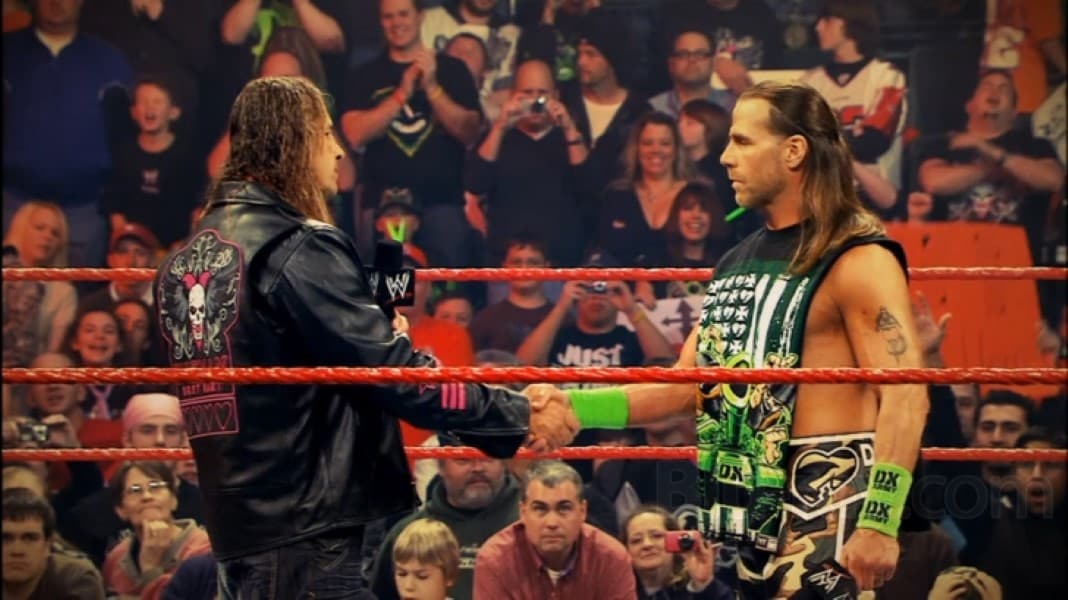15 Pro-Wrestling Terms You May Not Know The Meaning Of
Therichest.com author Chris Flynn:
A little over 100 years ago, an early incarnation of professional wrestling came crawling out of a smokey, smelly carnival tent and began its slow climb to the top of pop culture. The more popular wrestling became among the American people, the more it began to distance itself from the sleazy, untrustworthy carnival image. However, it has never been able to fully remove itself from the carnival world, as anybody who has been involved in the business will tell you.
Pro wrestlers still use much carney talk when discussing the behind-the-scenes aspects of the business, often times failing to realize that the words they are using have their origins in county fairs across the world. Of course, pro wrestling language is not just limited to words thought up by carnival proprietors two centuries ago. Over the decades, new words have been added to the wrestling vocabulary, which would make no sense if they were used in any other setting than sports entertainment.
We all know the meaning of terms like “heel,” “babyface,” and “smark.” And how do we know what heel and babyface mean? Because we’re smarks. However, there are many wrestling terms that regular fans may be unaware of. We’re going to look at just a few of those terms in this article and provide you with an explanation of what each one means.
15. Bomb Scare
In his 1999 autobiography Have a Nice Day, WWE Hall of Famer Mick Foley recalls having a “bomb scare” in the early days of his career.
In literally any other business which requires people to gather together in one place, a bomb scare means the threat of a terrorist attack. In professional wrestling, however, a bomb scare is any show which initially seems like the audience isn’t going to be into it. Wrestlers are an extremely insecure group of people, so it is possible having a match in front of an unenthusiastic audience would be worse to them than being the victims of an actual bombing.
Fortunately for Mick Foley, his bomb scare turned out to be unwarranted and he went on to have a good match in front of a hot crowd. There have, however, been thousands, maybe millions, of pro wrestling bomb scares which went on to become full-on bombings.
14. Sandbag
In professional wrestling, it is not uncommon to be paired with a guy who you don’t get along with backstage. A lot of wrestlers are consummate professionals and are able to have a great match without their issues with the other person getting in the way (think of all those classics between Bret Hart and Shawn Michaels). Others, however, cannot overcome their problems and so begin to take liberties (throw unnecessary hard punches) with their opponent. Then there are the passive aggressive wrestlers who don’t try to have a great match, but also don’t try to hurt their opponent. Instead, they spend the entire match “sandbagging.”
Sandbagging is when somebody’s opponent refuses to go along with a suplex or a slam. Rather than helping their opponent hoist them into the air, the wrestler goes limp and makes it as difficult as possible for his colleague to lift him.
This is particularly common when a veteran is in the ring with a newcomer who the locker room feels is becoming too full of himself. An example of this can be seen in an encounter between Tensai and Ryback from a number of years ago. Ryback had some difficultly picking up a sandbagging Tensai for the Shell Shock, which instantly killed The Big Guy’s gimmick.
13. Blading
Fans who followed wrestling during the Attitude Era or the years which immediately proceeded it will be familiar with the term “blading.” Younger fans, however, may be unsure about the definition. This is because blading was common in WWE when the company had to produce compelling television in order to beat WCW in the ratings. In 2016, WWE has a strict rule in place forbidding blading for fear, it will cost them their PG rating.
In wrestling, blading is the ancient (kind of) art of cutting oneself during a match, usually with a tiny piece of metal hidden inside a wristband, in order to produce blood and increase the excitement and drama. This is in contrast to the belief of many non-wrestling fans that wrestlers use fake blood during their matches (which really would make more sense).
Blading was particularly prominent during the territory days, and if you watch any interview with a performer from that era you will probably notice countless scars adorning their forehead.
Read the rest of the article here.

